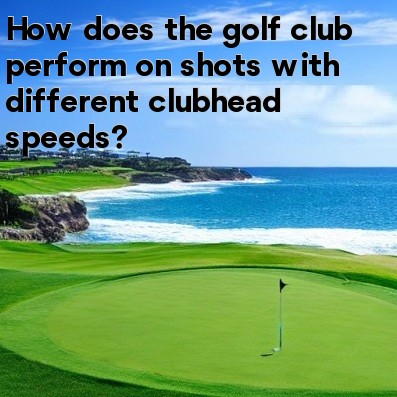
In golf, How does the golf club perform on shots with different clubhead speeds?
Golf is a game of precision and skill, and the performance of a golf club can vary depending on the speed at which the clubhead is moving. The clubhead speed plays a crucial role in determining the distance, accuracy, and trajectory of a golf shot. Let's take a closer look at how the golf club performs with different clubhead speeds.
- Slow Clubhead Speed:
- A golfer with a slow clubhead speed may struggle to generate sufficient power to hit the ball a long distance. The ball flight tends to be lower and may lack spin, resulting in limited control over the shot. Additionally, slow clubhead speed can make it more difficult to achieve the desired trajectory, and accuracy may be compromised.
- Mid-range Clubhead Speed:
- For golfers with a moderate clubhead speed, the performance of a golf club can be more consistent. The ball tends to travel a reasonable distance with sufficient loft and spin. This speed range provides a good balance between distance and control, allowing golfers to hit straighter shots and potentially achieve the desired trajectory more consistently.
- High Clubhead Speed:
- Golfers with a high clubhead speed have the potential to generate immense power. Shots hit with high clubhead speed can travel significantly further than those hit with slower speeds. However, the challenge lies in controlling the shot and achieving the desired trajectory. With high clubhead speed, there is a higher chance of mishits, including hooks or slices, due to the increased forces on the clubhead during impact.
In addition to distance and accuracy, clubhead speed also affects how the golf ball interacts with the clubface itself.
- Compression:
- When the clubhead speed is higher, the ball compresses against the clubface more efficiently. This compression allows the golfer to achieve optimal transfer of energy from the club to the ball, resulting in greater distance. Ideally, the compression should be maximized to benefit from the trampoline-like effect of modern golf clubfaces.
- Spin:
- Clubhead speed also affects the amount of spin imparted on the golf ball. A higher clubhead speed tends to generate more backspin, allowing the ball to stay in the air longer and potentially improve control and stopping power. On the other hand, a slow clubhead speed may result in less spin, making it more challenging to control shots on the green.
To optimize performance with different clubhead speeds, golfers can consider factors such as club selection, swing mechanics, and equipment customization. For example, golfers with slower clubhead speeds may benefit from using clubs designed to provide more loft, such as higher-lofted drivers or irons. Golfers with high clubhead speeds may choose clubs with lower lofts to help manage trajectory and reduce the chances of overly high shots.
Overall, the performance of a golf club is heavily influenced by the speed at which the clubhead is moving. Understanding how different clubhead speeds affect distance, accuracy, and ball-flight characteristics can help golfers make informed decisions and adjustments to optimize their performance on the golf course.





